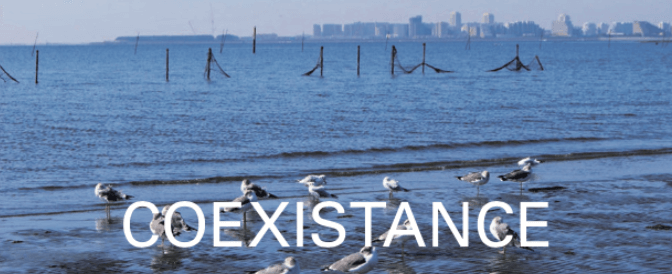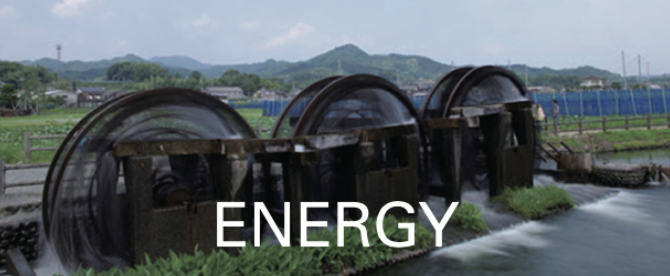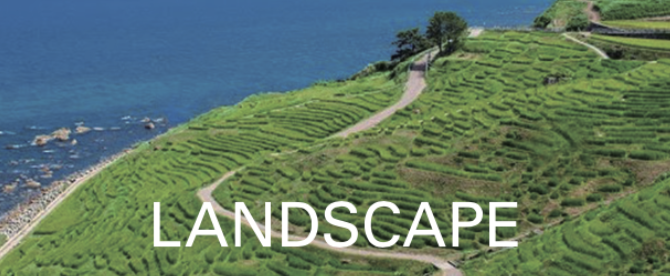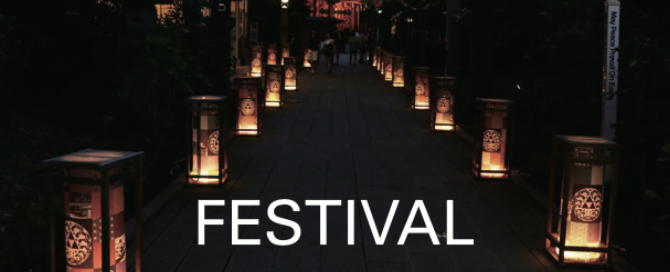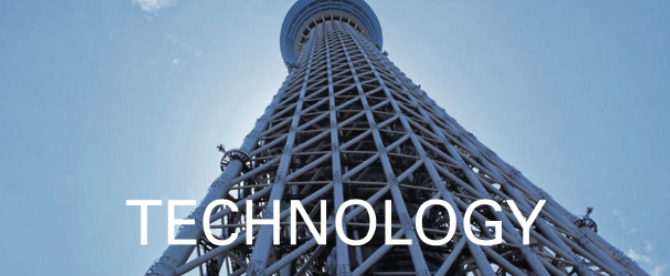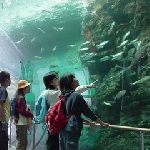
“4 million years old, the Great Lake Biwa” -Lake Biwa is classified as one of the world’s few ‘ancient’ lakes. This lake moved to the west and then expanded north-east, and formed the current lake basin about 400 000 years ago. Elephants came here 30,000 years ago. Paleolithic Age humans stayed here 20,000 years ago. You will discover these facts.”
This museum introduces the big changes in the natural environment due to the movement of Lake Biwa, since the beginning of people’s lives, and the relationship with the present life, including exhibiting creatures of Lake Biwa and lakes of the world. The environment of Lake Biwa is reproduced in a large aquarium.
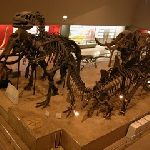
The Great Bay linked Lake Biwa, created a Unified Nation” -Osaka bay was born 12,000 years ago, after the last glacial period. Many living creatures grew in the shallow sea floor and in the muddy substrata, getting nutrients from the rivers. Osaka plains were made from the lagoon. Wet-Rice cultivation during the Yayoi period, 3rd century BC to 3rd Century AD, transformed the wetland into rice paddies and created a unified nation, Yamato Court.
This museum introduces the structure and relations of the natural world in the permanent exhibition rooms, entitled Familiar Nature, History of the Earth and Life, Evolution of Life, and Grace of Nature. When the sea becomes rough, salt increases in the lagoon, and rainwater makes it sweet. It is suitable for the growth of omnivorous fish, such as Chinu, black porgy. You will know that the Osaka plain was called the sea of Chinu, in the ancient times.

Torihama Kaizuka, a Shell-mound site from the beginning of the Jomon Period (13,000 – 10,000 years ago) is located at the junction of Has River and Takase River, which pours into Wakasa Mikata Lake. This museum, near the site, reproduces the waterfront scene during those ancient times.
Visitors can watch a video that reveals the environmental archaeology that surveyed Lake Mikata and Torihama Kaizuka, the positioning of the Jomon period in world history, and the necessity of the world view of the Jomon, in the global environment.

This town was developed as a castle town of Takayamajo Castle by the Kanamori family, which was a family of Kanamori Sowa (1584 – 1657), a master of the tea ceremony and garden designer. Its townscape was made by a group of artisans and craftsmen in Hida.
This Old townscape of Hida Takayama, consists of three streets of Kamimachi and Shimomachi, where irrigation channels run under the eaves, and Degoshi, projecting lattice, continue.
Sugitama, balls made from leaves tips of Japanese cedar, traditionally hung in the eaves of sake breweries, announcing the arrival of a new brew of Sake. And Odo, front door, which remains in the traditional townhouse in Japan, tells the history of the town’s transformation from a Shogun demesne to A merchant town.
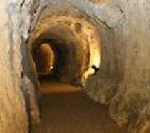
Ryugenji Mabu is a Main Gallery that developed in the middle of the Edo period (1603 – 1868) and was managed directly by Daikansho, the magistrate’s office. 157m of its 600m space is open to the public.
The traces of chisel remains are original. Iwami Silver Mine had completed its history before the modern mining method began in the Meiji period (1868 – 1912).
You can see the early modern mining method, which was the History of Sustainable development. That is exactly the value of World Heritage.
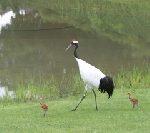
At Okayamajo Castle, Ujyou colored pich-dark and cranes are the symbol of Okayama Korakuen Garden. Cranes Village, Tsurunosato is located in the northwest Bichuu Kokubunji temple: (Kokubunji, state-supported provincial temple in the 8th century), in a green hilly area. Its purpose is to protect and breed cranes.
There are two large and small artificial ponds, a village house (administrative building), a learning house (training building), and a breeding cage in the site of about 3 ha. They perform artificial hatchings, with eggs received from Okayama Korakuen Garden. Cranes grow in the environment.

Nozaki Buzaemon (1789 – 1864) was a Japanese merchant who developed the salt field at Kojima, facing the Seto Inland Sea. He became the King of Salt Lord by Irihamashiki, a salt field that produced salt to draw in Sea Water with tidal variation, and to dry it. Buzaemon had built Omote Shoin, reception hall, Nagaya-mon, gate and house of security, and Onari-mon, gate for important persons, since 1833, at his residence, which was modeled after Daimyo Yashiki, the residence of Japanese feudal lords, and were valuable cultural properties.
There are three hermitages and five tea-ceremony rooms with the garden on the 1 hectare site. The garden was made in the image of Daimyo Teien, gardens of Japanese feudal lords. This was Shogun demesne, where any feudal lord was not local.
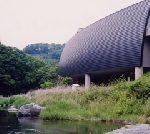
Misato is designated as a national natural monument to “fireflies and their origins.” It is a fount of innocence of inspiration. This museum is the entrance to Misato, which is the Open-air museum. River fish are bred here, such as Nagare Lefua echigonia, forktail bullhead – species of catfish, dark chub, Zacco platypus, and rhinogobius flumineus.
The museum introduces the naturally-breeding ecology of fireflies and the river of fireflies. Fireflies do not shine alone and are a symbol of natural links.
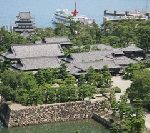
Takamatsujo Castle, was built by Ikoma Chikamasa,(1526 – 1603) a feudal lord, in the Azuchi-Momoyama period (1573 – 1603). It was a Mizushiro, a castle on the marshland, for defensive reasons. It faced the sea of Sanuki, which was written about in the Manyoshu, 8th century anthology of Japanese poetry, with Tamamoyoshi, the lead phrase of Sanuki Province famed in poetry. This castle had inner, middle and outer moats to draw-in Sea water.
This castle was succeeded by Matsudaira Yorishige (1622 – 1695), a feudal lord, the son of the first lord of the Mito Domain, the elder brother of Tokugawa Mitsukuni. He was the grandson of Tokugawa Ieyasu (1543 – 1616), the founder of the Tokugawa Shogunate and took the supervisory service to the Chugoku region and the Shikoku region, for the Tokugawa Shogunate. And this castle tower was converted into Nanban-style, in which the top floor overhung the lower floor.
The Investigation for the restoration of this castle tower is progressing now!
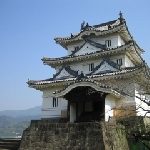
This castle is an elegant castle that melted into the scene of the sea and mountains, which was built in 1601 by Todo Takatora (1556 – 1630), a feudal lord and excellent castle designer. This was the castle of the feudal lord of the 9th generation of the Date family since 1615, which is the only sea castle among the existing 12 castle towers in Japan.
Date Hidemune (1591 – 1658), moved to this castle in 1615 and became the 1st lord of Uwajima domain, who was the eldest son of Date Masamune (1567 – 1636), Japanese feudal lord, the founder and the first lord of Sendai Domain. Since 1615, this had been the castle of the feudal lord of the Date clan in the west Japan.
This was also the castle of Date Munetada (1792 – 1889), the 7th castle lord of Uwajima domain, who reformed the administration of Uwajima Domains, against its financial deterioration.
He also suggested the opening of diplomatic relations to the Tokugawa shognate, upon the arrival of Matthew C. Perry (1794 – 1858), a Commodore of the United Sates Navy, who played a leading role in the opening of Japan, in 1853.
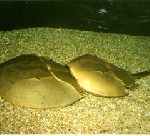
This museum exhibits Saijo City historical materials and provides an opportunity for breeding and observing horseshoe crabs, which have remained unchanged for more than 200 million years. They are known as the live fossil.
The endangered horseshoe crab had inhabited many areas from the Seto Inland Sea to the northern coast of Kyushu Island before the high economic growth days of post-World War II, which was a symbol of the conservation of fishing zones and the natural environment.
This museum’s breeding is for the Kawarazu Coast, where the horseshoe crab is likely to revive.
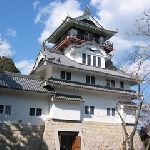
The museum is in the building reproduced in the shape of a castle on the site of Nakamurajo Castle, second bailey in the Tamematu Park. It was the castle of the feudal lord of Yamauchi Yasutoyo (1549 – 1625), the younger brother of Yamanouchi Kazutoyo (1545/1546 – 1605), the first lord of the Tosa Domaine. This museum introduces the local life on the Shimanto River and its tributaries, and the history of the town called Kyoto in Tosa Province, and exhibits valuable materials such as arts and crafts. You can see the city from the observation room on the 6th floor.
In addition, this museum possesses Shichiseiken, Seven Stars Sword – a sword with a gold inlay of clouds and seven stars forming the Great Bear constellation. It was once owned owned by Ikkujinja Shrine at Masaki Shimanto City, and is unknown about the genesis and the historical trail.
– It is said that the Shichiseiken, Seven Stars Sword inlaid pattern on the front and back representing the Great Bear constellation, was the guardian sword of the Prince Shotoku (574 – 622). And the Shichiseiken possessed by Shitennoji temple Osaka, is a National Treasure. Other existing Shichiseiken are a single-edged sword, but this Shichiseiken is a double-edged sword.
